Structural Behavior and Stability of Confined Cylindrical Shells under External Pressure
Summary:
The research examines the structural behaviour and stability of cylindrical steel shells confined by a deformable medium under uniform external pressure, motivated by the structural response of buried pipelines surrounded by saturated soil medium or concrete encasement. When the groundwater table is above the pipeline level, the water reaches the pipe through the permeable surrounding soil or concrete and hydrostatic pressure conditions develop around the pipeline, which may cause buckling of the steel pipeline wall. The present investigation is computational and, for this purpose, the general-purpose finite element program ABAQUS is used. The numerical simulation is verified through available experimental data and analytical solutions. A quasi two-dimensional model is developed, assuming no variation of stress and deformation in the axial direction of the cylinder. The cylinder and the surrounding medium are simulated with nonlinear finite elements that account for both geometric and material nonlinearities. Numerical results are presented in the form of pressure-deformation equilibrium paths, and show a rapid drop of pressure after reaching the maximum pressure level, as well as significant imperfection sensitivity. Special emphasis is given on the response of the confined cylinders in terms of initial imperfections; those are considered in the form of initial out-of-roundness of the cylinder and as an initial gap between the cylinder and the medium. Furthermore, the effects of the deformability of the surrounding medium are examined. The results indicate significant imperfection sensitivity and a strong dependency on the medium stiffness. A simple plastic-hinge mechanism is developed that results in a closed-form expression and illustrates the post-buckling response of the cylinder in an approximate manner. The distribution of plastic deformation, as well as the variation of cylinder-medium contact pressure around the cylinder cross-section is also investigated. Furthermore, the effects of uniform vertical preloading on the maximum pressure sustained by the cylinder are examined. Finally, the numerical results show good comparison with a simplified closed-form expression, proposed elsewhere, which could be used for design purposes. The numerical results are also employed to develop a simple and efficient design methodology, which is compatible with the recent general provisions of European design recommendations for shell buckling, and could also be used for design purposes. The present finite element results are compared with experimental results, the proposed design methodology and available analytical predictions, towards better understanding of confined cylinder behavior. Furthermore, a relevant chapter for the design of confined steel cylinders, within the framework of the European Design Recommendations, is developed, for possible inclusion of the present work in future editions of the EDR. Finally, the problem of “shrink buckling” is modeled and the results are compared with available experimental data, as well as results from the corresponding hydrostatic buckling problem. The differences between those two problems of confined cylinder buckling are pin-pointed, emphasizing the significantly different response of the two problems with respect to the presence of initial imperfections.
People:
Daniel Vasilikis
Spyros A. Karamanos
Relevant Publications
In Referred Journals
- Vasilikis, D. and Karamanos, S.A., “Stability of Confined Thin-Walled Steel Cylinders under External Pressure”, International Journal of Mechanical Sciences, Vol. 51, No. 1, pp. 21-32, January 2009.
- Vasilikis, D. and Karamanos, S.A., “Buckling Design of Confined Steel Cylinders under External Pressure”, Journal of Pressure Vessel Technology, Vol. 133, No. 1, Paper Number: 011205, February 2011.
- Vasilikis, D. and Karamanos, S.A., “Mechanics of Confined Thin-Walled Cylinders Subjected to External Pressure”, ASME Applied Mechanics Reviews, Special Issue, Invited Paper, under review.
- Vasilikis, D. and Karamanos, S.A., “Buckling of Unconfined and Confined Thin-Walled Steel Cylinders under External Pressure”, ASCE Pipelines Conference, Atlanta, Georgia, July 2008.
- Vasilikis, D. and Karamanos, S.A., “Buckling Design of Confined Steel Cylinders under External Pressure”, ASME Pressure Vessels and Piping Conference, PVP2009-77216, Prague, Czech Republic, July 2009.[3rd Prize in Student Paper Competition, ASME Pressure Vessels and Piping Conference (PVP2009), Prague, Czech Rep.]
-
Vasilikis, D. and Karamanos, S.A., “Buckling Design of Confined Steel Cylinders Under External Pressure”, 7th National Conference on Metal Structures, Volos, Greece, September 2011.
In Conference Proceedings
Figures
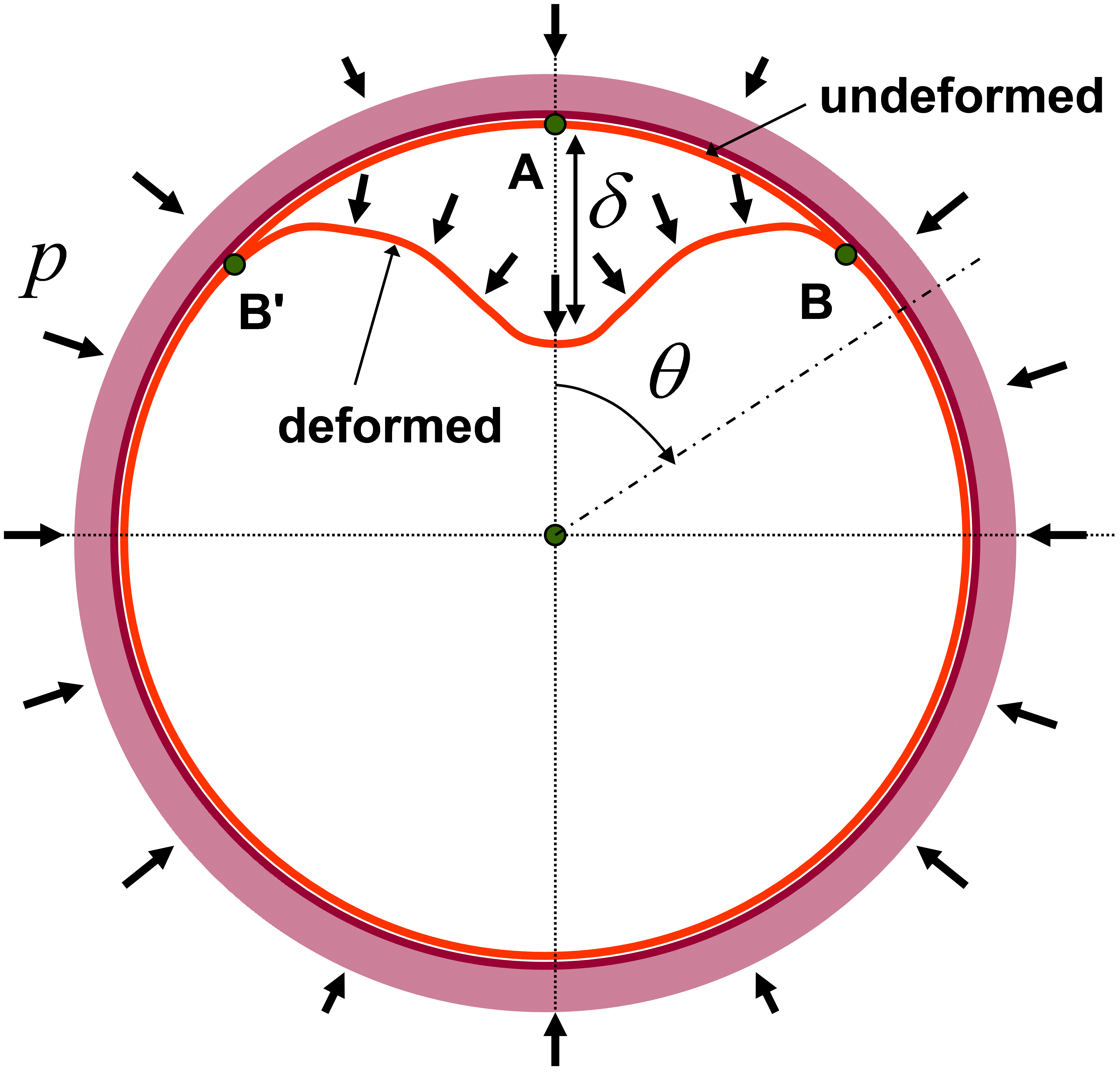
Figure 1: Schematic representation of the buckling problem of an externally-pressurized cylinder confined by the surrounding medium.
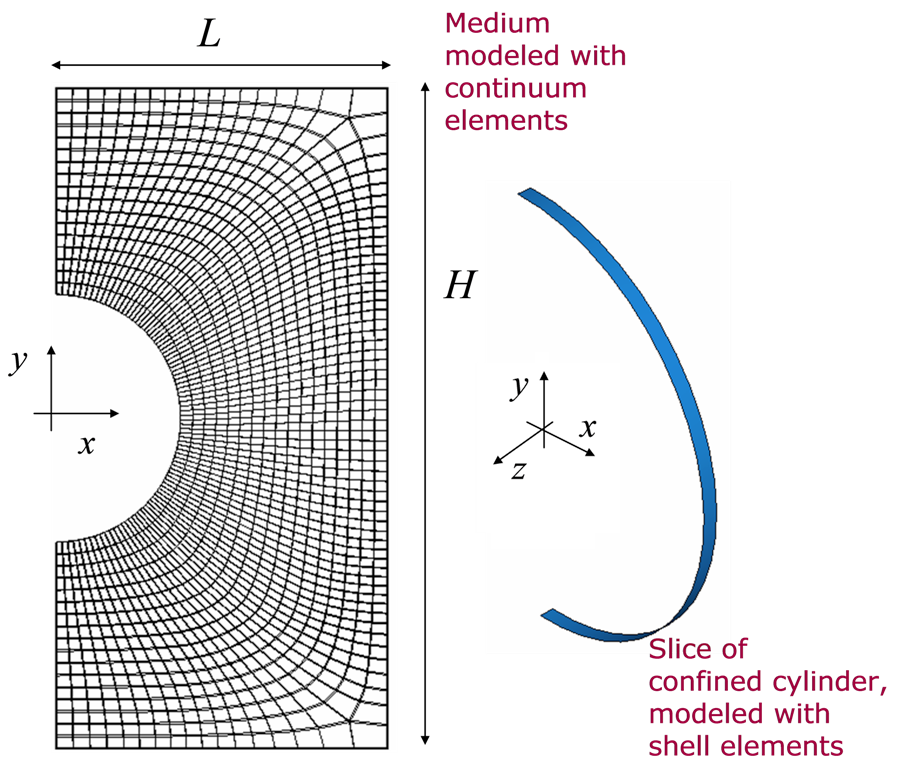
Figure 2: Finite element model of cylinder-medium system.
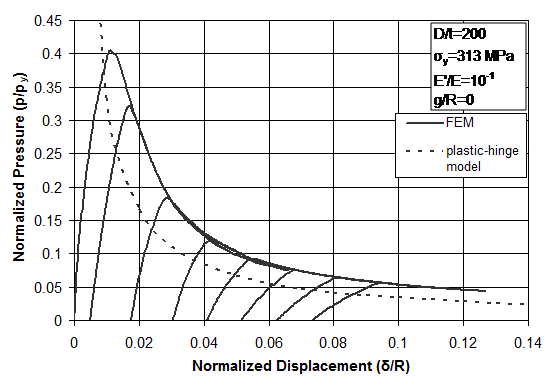
Figure 3: Response of tightly-fitted steel cylinders (), embedded in a rigid confinement medium; numerical results for different values of initial out-of-roundness and plastic-hinge collapse mechanism equation.
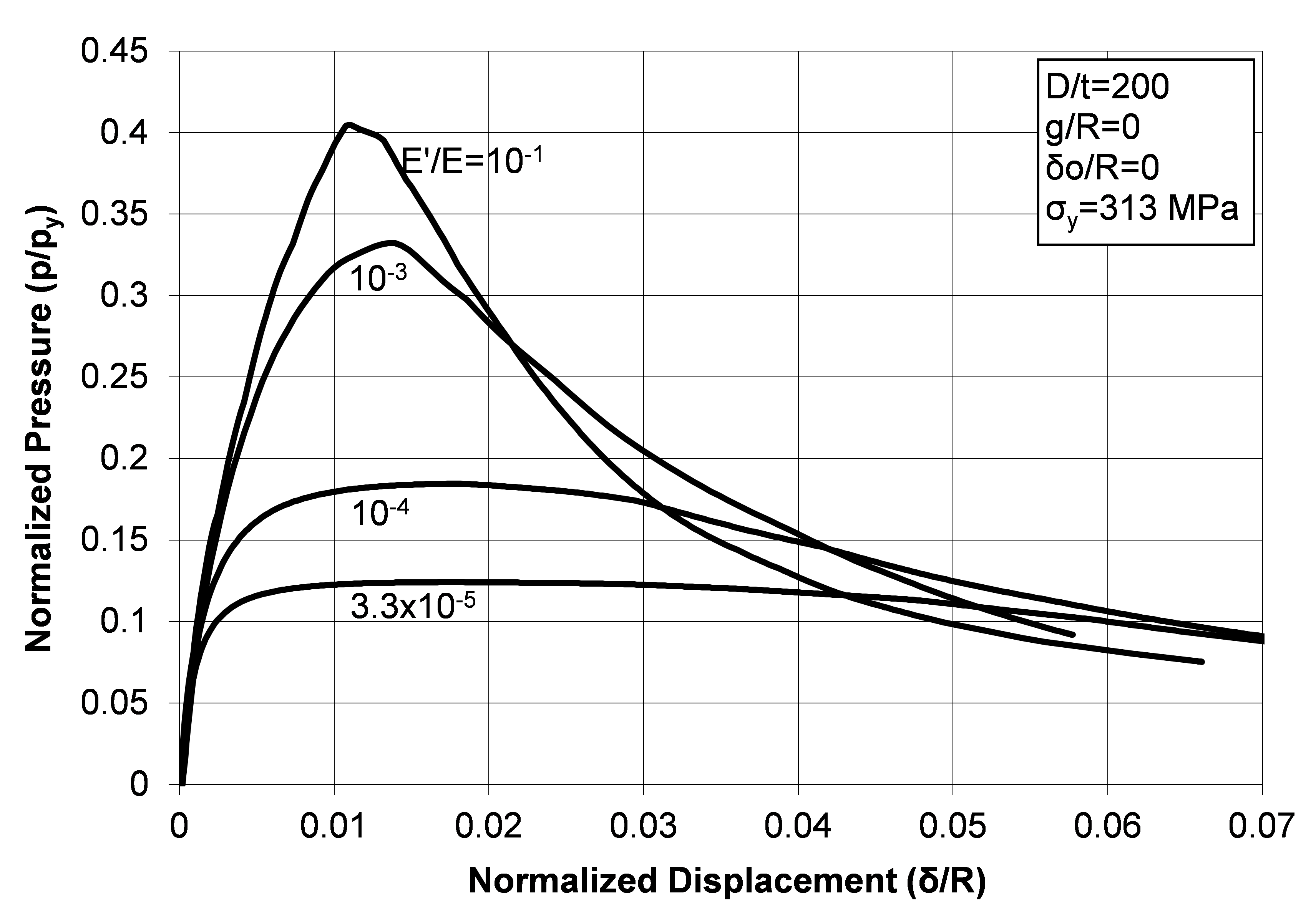
Figure 4: Pressure versus deformation equilibrium paths of perfect steel cylinders , ) for different values of confinement medium modulus ().
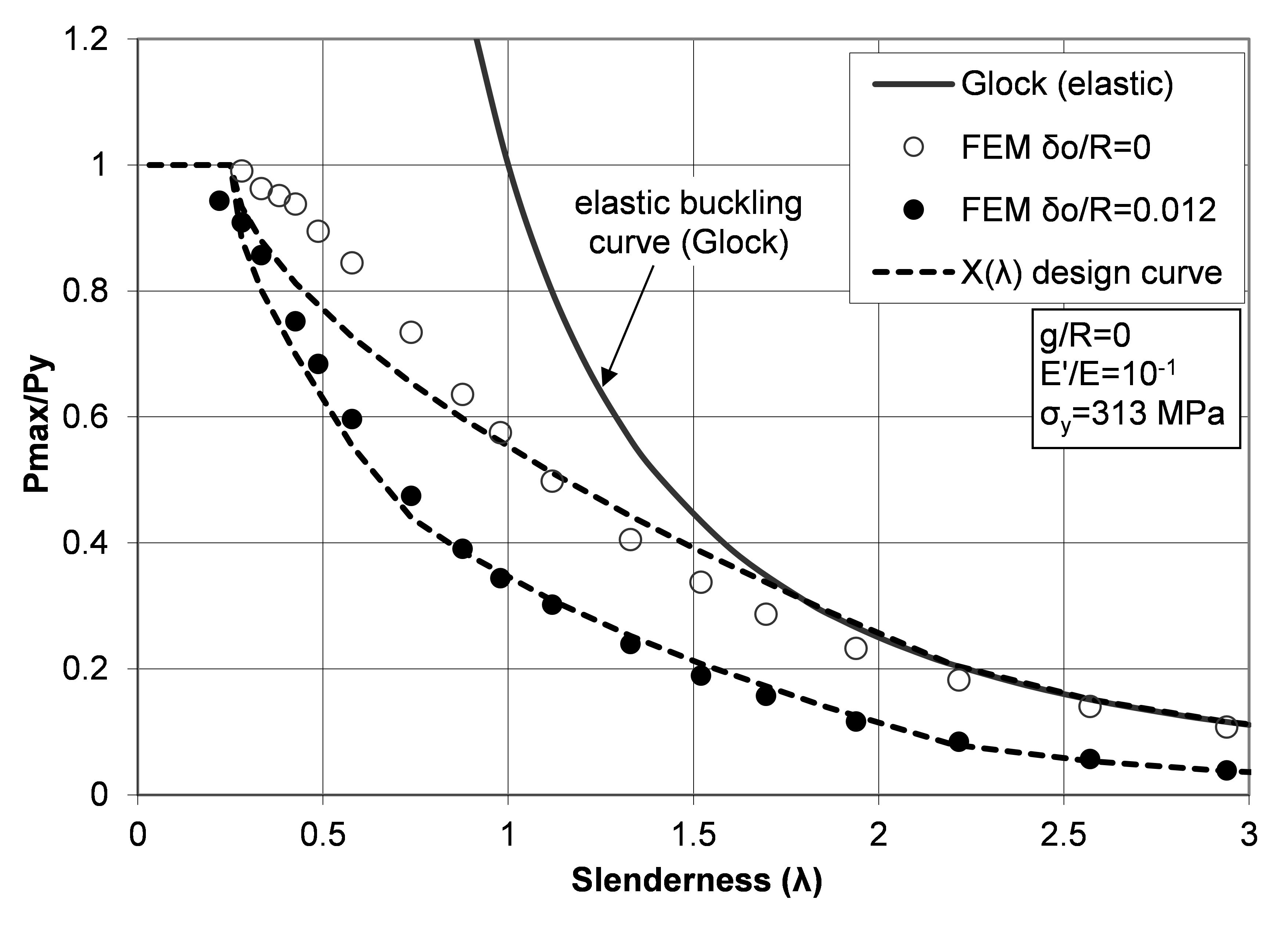
Figure 5: Variation of maximum pressure of steel cylinders embedded in a rigid confinement medium with respect to the slenderness parameter ; finite element results and predictions of the design methodology.
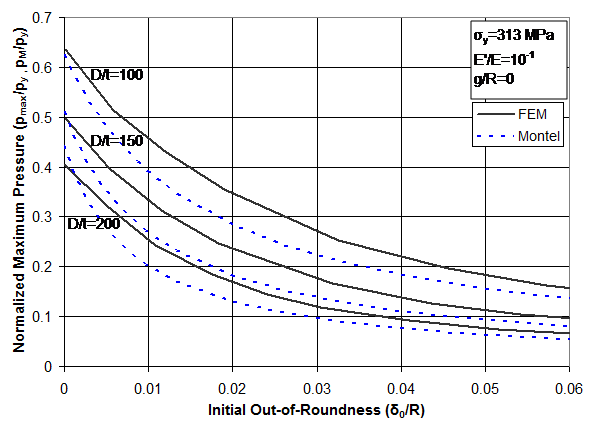
Figure 6: Comparison between numerical results and analytical predictions from Montel’s equation of steel cylinders embedded in a rigid confinement medium with respect to the out-of-roundness imperfection for different values of D/t ratio.